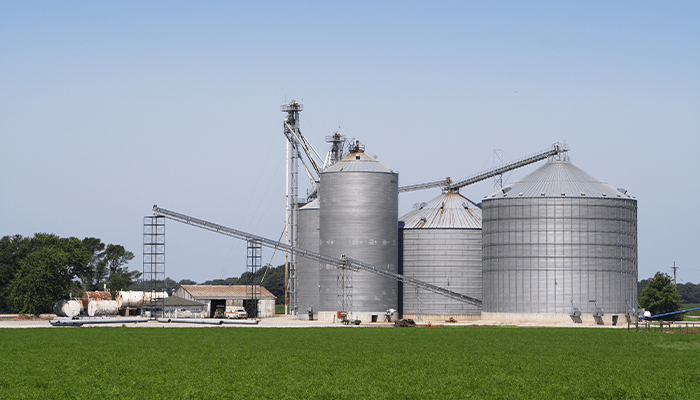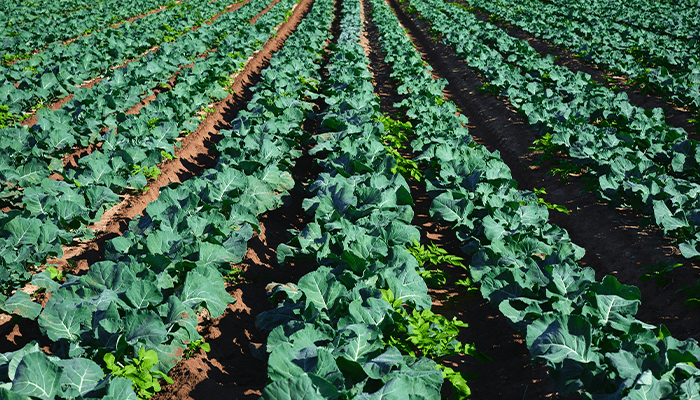
Working Safely in Confined Spaces: Essential Tips for Agricultural Industry Workers
Confined spaces continue to be an area of safety concern for the ag industry. An average of 92 people are killed every year in confined space incidents; of this total, 60% of the deaths are those of would-be rescuers.
A confined space is described by the Occupational Safety and Health Administration (OSHA) as having the following characteristics:
- a space that is accessible to a worker
- a space that has limited or restricted means of entry or exit
- a space not designed for continuous occupancy
In an agricultural workplace, a confined space is any space not designed or intended as a regular workstation, with limited or restricted means of entry or exit, and associated with potential physical and/or toxic hazards to workers who intentionally or unintentionally enter it.
Here are some common examples of confined spaces in the agribusiness industry:
- Grain bin
- Silos
- Manure storage facilities
- Hopper bottom feed bins
- Grain transport vehicles
- Septic tanks
- Fertilizer storage tanks
- Fermentation tanks
Subscribe today for more essential tips on working safely in confined spaces and other agricultural industry insights.
Completing a risk assessment and communicating the hazards of any confined space hazards in your operation can help keep employees safe and determine if a permit will be necessary.
A few things to consider:
- Could the work be done another way without entering the confined space?
- Have you established entry and exit procedures to and from the confined space?
- Has your emergency procedure been communicated to other employees, and they understand?
- Have you organized signage and warnings for any confined space for those not trained?
- Do you have the appropriate PPE?
The OSHA Confined Space Entry Standard, 29 CFR 191.146, states that a written permit is needed to enter certain confined spaces, called ‘permit-required’ spaces. However, it is important to note that not all confined spaces are permit-required.
A permit is required if the space has one or more of the following:
- Contains or has the potential to contain a hazardous atmosphere.
- Contains a material with the potential to engulf someone.
- Has an internal configuration that might cause an entrant to be trapped or asphyxiated by inwardly converging walls or by a floor that slopes downward and tapers to a smaller cross section.
- Contains any other recognized serious safety or health concerns.
In short, if the space has the potential to cause harm to a person, it is likely to be a permit-required confined space, meaning it needs particular attention.
Written permits issued by an employer before entry to such a space mean the risks have been considered, and response plans are in place should someone get in trouble while inside. Some of the hazards relating to confined spaces in agriculture include entrapment or engulfment in grains, getting entangled in moving machinery, asphyxiation due to exposure to toxic environments or suffocation due to not enough oxygen in the environment, falls, electrocutions, drowning, respiratory distress due to exposure to dust and micro toxins, and burns from fires and explosions.
Plan for safe entry into and exit from permit-required spaces at your agriculture operation. Make sure you have worked out the emergency first response if something goes wrong. The first instruction to first responders must always be, “Do NOT follow me in.” It’s bad enough for one person to succumb to hazards—others rushing in to save them could result in multiple fatalities.
Where possible, cover and lock entry to permit-required spaces so people cannot enter, intentionally or unintentionally, without permission and a safety plan.
Take the time to let this sink in. Rushing into a confined space without considering the consequences will likely be deadly. Providing a safe and healthy workplace and ensuring everyone goes home at the end of the day must be everyone’s priority.
Ensure your policies are up to date and signed off. The risk management team at AssuredPartners Ag has many templates available, including one specific to Working in Confined Spaces.
Interested in enhancing your risk management practices? Contact us today to learn more about our risk management services and how we can assist your agricultural operations.

Featured News & Insights

The outlook for the U.S. poultry market is promising as demand remains high, flock populations have recovered, and market prices are expected to increase, according to the USDA’s August 2024...

Grain entrapments are down 36 percent in 2023, according to Purdue University's Agricultural Safety and Health Program's latest "2023 Summary of U.S. Agricultural and Confined-Space Related Injuries...

The recent announcement from the U.S. Environmental Protection Agency (EPA) regarding the emergency suspension of dimethyl tetrachloroterephthalate (DCPA), commonly known as Dacthal, signals a...